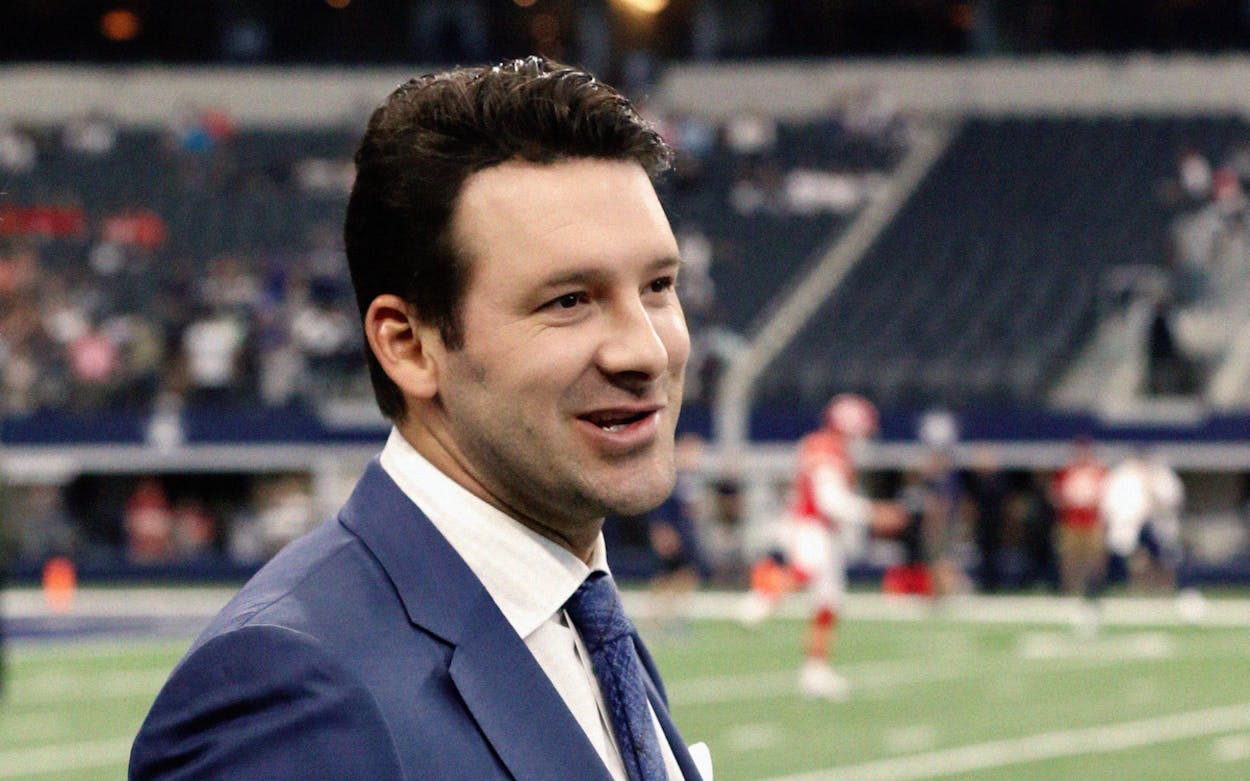Last night, the Buffalo Bills and the Kansas City Chiefs played one of the greatest NFL postseason games ever. Both quarterbacks—Tyler native Patrick Mahomes and Josh Allen, who comes from someplace called “California”—were, in both statistical terms and watch-with-your-eyes-and-see terms, better than any quarterback had ever been in the playoffs in league history. (Bart Starr, who had held the NFL record for postseason passer rating for more than five decades, is now in third place.)
But to describe the game as an offensive showcase makes it seem as if the defense was nonexistent; in truth, both defenses played incredible football that showed that the game is simply one in which a flawless offense will always beat a near-flawless—or even flawless—defense. And no one had more fun watching how it played out than Tony Romo, perched in the CBS broadcast booth alongside Jim Nantz.
We have praised Romo before for the insight he shares with viewers. No one is better at explaining exactly what is happening on the field while we at home scarf nachos and yell at the screen. Early in his broadcast tenure, Romo seemed to be a witch, announcing the play that would be run before the ball was snapped with eerie precision. It was a fascinating way to watch football, and over time, he refined his predictive impulses into something more educational: rather than simply spoil the play, Romo teaches viewers to watch the game like a quarterback, so that we can recognize a safety near the line of scrimmage as a clue that the slant route might be open.
In this way, we all became a little more like Tony Romo, capable of understanding the game on a deeper level than mere passive observers—while still scarfing nachos and yelling at screens. But last night—as the normal rules of football were seemingly discarded in favor of offensive inevitability (three lead changes and a tie in the final two minutes!!)—Romo sensed that granular analysis was not what this moment, when we were all having our minds blown, called for.
So instead, Romo let his mind be blown with the rest of us. The other aspect of Romo’s broadcast charm is a certain giddy enthusiasm—you can often hear him worry for each quarterback, as though he still imagines himself in their cleats—but Romo brings more than just excitement. He speaks in his natural voice, with none of the stilted, interchangeable, I’m-on-TV self-consciousness that plagues new broadcasters. He explains the parts of the game that can be explained, but he doesn’t pretend to have answers to the unbelievable, which makes him the perfect guy to narrate moments when the game reaches such extraordinary, inexplicable heights.
Nonetheless, Romo’s performance on Sunday was not met with universal acclaim. Fans and NFL personalities alike were split on whether Romo enhanced their enjoyment of the game or distracted from it. They criticized Romo’s inability to finish a thought and accused him of making himself “sound bigger than the game.”
Was Romo a tad incoherent in the final moments of the game? Sure. There will be time in the days (and years) ahead to make sense of how Chiefs-Bills has changed the NFL (at the very least, we expect that the current overtime rules will be reconsidered, given that Buffalo never touched the ball again after scoring a touchdown to take the lead with 13 seconds left). But in the moment, Romo didn’t pretend to have that perspective, nor did he adopt the authoritative demeanor of an Al Michaels or Joe Buck and attempt to contextualize events that were still unfolding. That would have rung false and undermined the trust Romo has cultivated in viewers who benefit from the way he teaches us to see the game. In moments like the one on Sunday night, Romo comes off less like a broadcaster than he does an avatar for the spirit of sports fandom itself.
We watch football because we want to see incredible things happen. The sport is designed to be watched on television in a way that makes those jaw-dropping moments seem downright epic. When the game gives us two young quarterbacks engaged in the finest postseason performance football has ever seen, Romo’s hyperventilating is the appropriate reaction. We have seen countless sportscasters keep their cool. In the biggest moments, Romo loses his, and watching football is more fun because of it.








